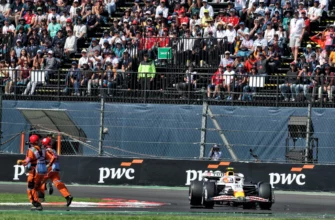In a compelling demonstration of exponential growth, the CEV Beach Volley European Cup has announced an unprecedented surge in club registrations for its 2025 edition. Now in only its third year, the competition has solidified its position as a cornerstone for developing club-level beach volleyball across the continent, drawing in a remarkable 28 men’s and 22 women’s clubs from 24 National Federations. This represents a significant milestone, underscoring the event`s burgeoning influence and the widespread enthusiasm it generates.
A Trajectory of Rapid Expansion
The journey of the CEV Beach Volley European Cup has been nothing short of spectacular, especially when considering its relatively nascent stage. Launched in 2023 with a modest, yet determined, beginning in Balikesir, Türkiye, that inaugural event featured 10 clubs per gender, representing nine National Federations. A year later, held in Montpellier, France, the tournament had already expanded its footprint to 16 clubs per gender from 15 federations.
The 2025 figures, however, mark a significant inflection point. To witness such a dramatic escalation in participation—more than doubling the initial club count in just two years—speaks volumes about the strategic vision behind the tournament and the burgeoning enthusiasm within European beach volleyball communities. It appears the “slow but steady” growth of previous years has now evolved into a robust sprint, perhaps even a controlled explosion.
The Club-Centric Philosophy: Depth Over Individual Brilliance
One of the distinctive attributes of the CEV Beach Volley European Cup is its unwavering focus on the collective strength of clubs rather than the isolated brilliance of individual athletes. This format is ingeniously designed to highlight the depth of talent nurtured within European clubs, encouraging a sustainable development model for the sport. It`s a subtle but powerful shift from the individual-focused narrative often prevalent in beach volleyball, asserting that a strong club infrastructure is paramount for long-term success. It suggests that a well-oiled machine, rather than a singular star, might just be the new recipe for continental glory.
This emphasis is clearly resonating. The record registrations indicate that clubs are not only embracing this philosophy but are actively investing in creating robust beach volleyball programs capable of competing at a continental level. This is not merely about fielding two star players; it is about cultivating an environment where multiple pairs can thrive, showcasing the collective prowess of an organization.
Expanding Geographic Footprint and Zonal Integration
The involvement of 24 National Federations underscores the widespread appeal and increasing accessibility of the European Cup. From established volleyball powerhouses to emerging beach volleyball nations, the diversity of participants reflects a truly pan-European endeavor. Furthermore, the strategic integration of Zonal Associations (BVA, MEVZA, and WEVZA) in delivering qualifying events has added another layer of competitive opportunity and regional engagement. This distributed qualification system ensures broader representation and empowers local development, weaving a tighter, more interconnected fabric across the European beach volleyball landscape.
The Road to Heraklion: Defending Crowns and New Challenges
As the preliminary phases loom in late September and early October, anticipation builds for the ultimate showdown in Heraklion, Greece, scheduled for early November. The defending champions, Azerrail of Azerbaijan, return with the formidable task of retaining their historic double crown claimed in Montpellier last year. Their pursuit of a third consecutive triumph adds a compelling narrative layer to the competition—an unprecedented challenge for a team that has set a high bar.
Meanwhile, the Greek club 4 Sports Club Athens holds the unique privilege of being pre-qualified for the final stage as the host representative, setting the stage for a strong local challenge. The remaining seven finalists in each gender will emerge from the preliminary crucible, battling through a field rich with both seasoned contenders and numerous clubs making their historic debuts on the European stage. This blend of experience and fresh ambition promises a dynamic and unpredictable tournament, where any club could potentially carve its name into history.
Conclusion: A New Era for European Club Beach Volleyball
The overwhelming response to the 2025 CEV Beach Volley European Cup is more than just a statistical achievement; it is a clear indicator of the sport`s robust health and promising future in Europe. By fostering club development and emphasizing collective strength, the CEV has cultivated a competition that not only excites fans but also provides a vital platform for growth and professionalization. As the preliminary rounds approach, the continent watches with keen interest, eager to witness the next chapter in this rapidly unfolding success story of European club beach volleyball. The tide is certainly rising, and it`s bringing an impressive wave of talent with it.








